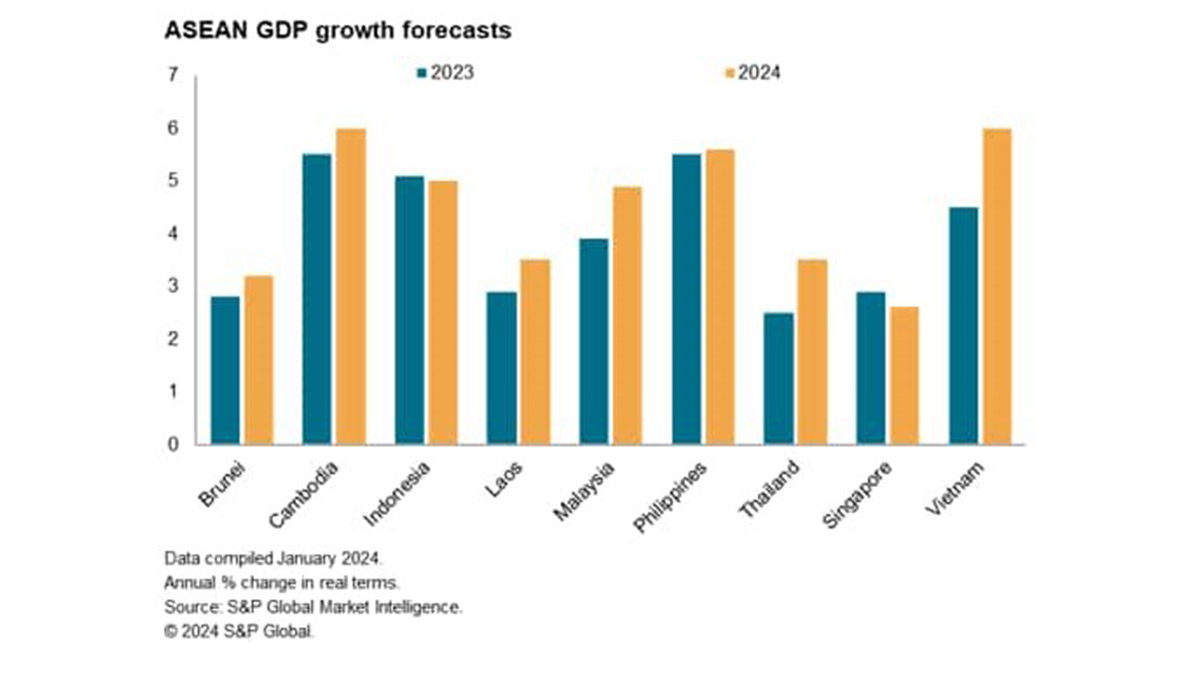First of 2 parts
The Philippines’ economy or Gross Domestic Product grew at a rate of 5.7% for the first quarter of 2024. Compared to our neighbors in the Asean, for 2023 and 2024, the growth rate of our country is in the top 3 surpassed only by Vietnam and Cambodia.
To sustain our country’s economic growth, we need quality investments, including foreign investments, in industries and sectors which will help our economy adapt to the future and remain competitive.
A few months ago, after the US Presidential Trade and Investment Mission in the Philippines, it was announced by US Commerce Secretary Gina Raimondo that American companies will invest over USD$1 billion in the Philippines.
Among these investments are:
- Microsoft will collaborate with local government agencies to train 100,000 Filipino women and thousands of job seekers in artificial intelligence (AI). The company also plans to deploy AI-powered literacy tools to 27 million Filipino students and help connect 1 million Filipinos to the internet.
- Mastercard, Visa, and UPS will provide training to Filipinos, while Google plans to roll out Google career certificate courses nationwide.
- KKR, a private equity firm, plans to purchase 2,000 telecommunications towers worth about US$400 million.
- Ally Power announced a US$400 million agreement with Meralco to build a hydrogen and electric refueling station.
Based on the above, about 80% of the expected US$1 billion investment in the Philippines will come from two companies: KKR for the purchase of telecom towers and Ally Power for its venture with Meralco.
These investments are certainly beneficial for the Philippines, but let’s also examine some of the declared investments being made in our Asean neighbors.
Vietnam
- Apple will increase spending and investing in Vietnam, where it has a production hub. The company has already spent US$16 billion since 2019 through its local supply chain and has more than doubled its annual spending in Vietnam during this period.
- Vietnam is seen as an alternative to China as a manufacturing hub, with many multinational companies establishing factories to produce their goods.
- Late last year, about 15 US companies, including semiconductor firms, expressed interest in investing US$8 billion in Vietnam in clean energy infrastructure, contingent on the country’s progress on renewable energy rules.
Indonesia
- Apple has invested in Developer Academies in Indonesia, with a total investment of Rp 1.6 trillion (US$98.5 million).
- Microsoft will build a data center worth US$867 million in Indonesia. The company plans to invest US$ 1.7 billion over four years in cloud and AI architecture, the largest investment in its 29-year history in Indonesia.
- NVIDIA announced plans to establish an AI center in Central Java, named AI Nation, investing US$200 million in the center’s infrastructure and human resource development.
Malaysia
- Malaysian company YTL is partnering with Nvidia to build Malaysia’s first AI cloud data center, costing RM 20 billion (1 Malaysian Ringgit = P12.52).
- Microsoft’s CEO Satya Nadella recently visited Malaysia and pledged to invest RM 10.5 billion to build Malaysia’s AI infrastructure.
- Google committed US$2 billion to build its first data center and cloud region in Malaysia.
Thailand
- Microsoft, Google and Amazon Web Services each said that they will investing Thailand with total funds amounting to nearly US$8 billion.
- Google also announced that Thailand would be the location of its fourth data center hub in the Asia-Pacific region and its 11thin the world. This is in agreement with the Thai government to deliver cloud and AI infrastructure.
From the foregoing, the type of investments being made in our Asean neighbors—Vietnam, Indonesia, Malaysia, and Thailand—differs from those in the Philippines, as they focus on the latest technologies such as data centers and artificial intelligence.
Moreover, it is notable that the companies making these investments are the largest technology companies, worth trillions of US dollars. If industry assessments are accurate, we are still in the early stages of investment and development in data centers and AI. These investments, already consisting of eye-watering amounts, are just the beginning.
Additionally, the countries where these technology investments are made and where these infrastructure are built can expect not only the development of related industries and services but also the development of a skilled workforce that will be needed to service these industries.
With that in mind, hopefully, the Philippines will also be able to attract these kinds of investments.
In our next article, let’s explore some of the measures our country can take to attract these types of investments.
(The author, Atty. John Philip C. Siao, is a practicing lawyer and founding Partner of Tiongco Siao Bello & Associates Law Offices, an Arbitrator of the Construction Industry Arbitration Commission of the Philippines, and teaches law at the De La Salle University Tañada-Diokno School of Law. He may be contacted at jcs@tiongcosiaobellolaw.com. The views expressed in this article belong to the author alone.)


